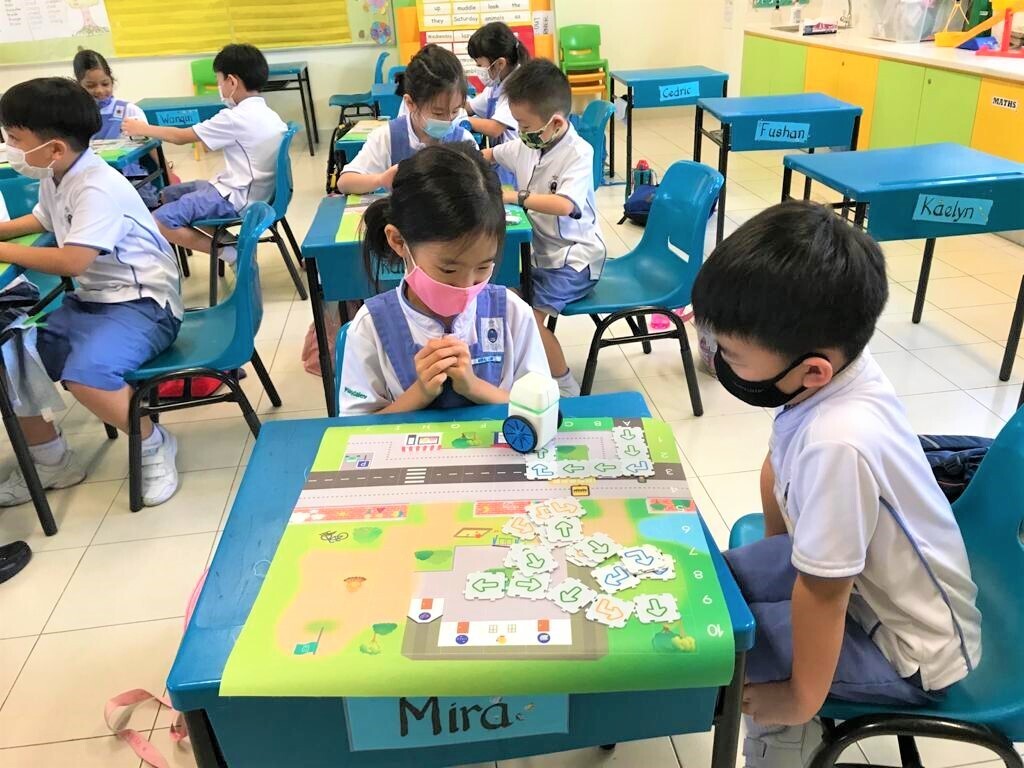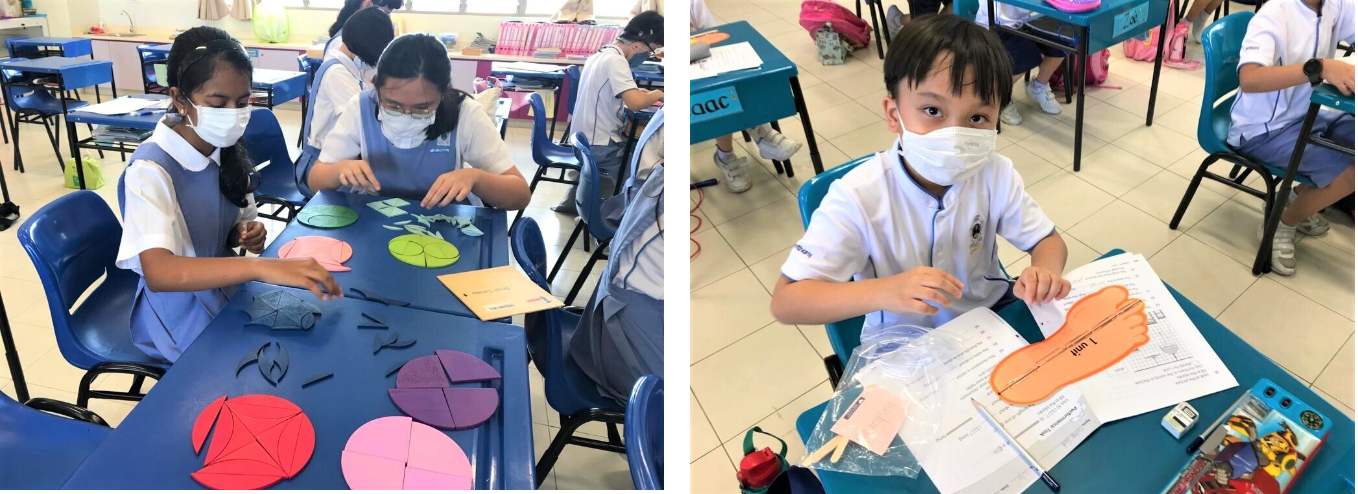Mathematics
Mathematics
The CCPS Math curriculum aims to develop our children to be effective problem solvers with the confidence and perseverance to think creatively and critically in their acquisition of mathematical skills, knowledge and processes.
Department Key Programmes
P1 and P2 Learning Support for Mathematics
Our Learning Support Programme for Mathematics (LSM) provides early intervention for Primary 1 and 2 children who need additional support in Mathematics. The programme focuses on basic mathematical skills and concepts to consolidate a good foundation. It aims to support the learners and build children’s confidence and positive beliefs about their ability to do Mathematics.
P3 to P6 Math Olympiad Programme
Olympiad Training aims to stretch our high progressive children and sharpen their logical and analytical skills in problem solving. This enables our children to hone their skills for competitions such as the Singapore and Asian Schools Math Olympiad for Primary School (SASMO).
P1 to P6 Parents’ Workshop
This workshop focuses on helping parents guide their child in solving word problems. Teachers would share and explain to parents various strategies used in solving Math problems, including the model method and various heuristics. Parents will be engaged in solving these Mathematics problems with their child in the workshop.
P1 to P5 Mathematics Championship
Mathematics Championship aims to improve the factual fluency skills of all children and foster the love for Math. Consisting of two rounds, it is conducted once a term in Term 1, 2 and 3. Three finalists are selected from each class in a preliminary round and all finalists take part in the final round. Attractive prizes are awarded to all finalists and winners.
P1 to P6 Mathematics Learning Package
Our Mathematics package aims to explicitly teach various skills. To better meet the diverse learning needs of our children, our teachers will vary the degree of scaffolding through differentiated instructions, developing and stretching our children’s mathematical reasoning and thinking skills.
P1 to P6 ICT Mathematics
Integrated lessons with the use of virtual manipulatives or other related websites will be conducted at least once a term. ICT tools can help children to understand mathematical concepts through visualization, exploration and experimentation while developing the children’s 21st century competencies such as self-directed learning and collaboration.

Department Strategies
Concrete-Pictorial-Abstract (C-P-A) Approach
Learning experiences in the classroom are designed based on the C-P-A approach. The C-P-A approach builds on children’s existing knowledge by introducing abstract concepts in a concrete and tangible way. It involves moving from concrete materials, to pictorial representations, to abstract symbols and problems.
| Approach | Details |
|---|---|
| Concrete | Concrete is the “doing” stage where children engage in activities to learn mathematical concepts and skills using manipulatives. |
| Pictorial | Pictorial is the “seeing” stage where children use pictorial representations to model problems. This stage encourages children to make a mental connection between the physical object they just handled and the abstract pictures, diagrams or models that represent the objects from the problem. |
| Abstract | Abstract is the “symbolic” stage where children progress from pictorial representations to writing equations and solving them. |

George Polya’s 4 stages of problem solving
Mathematical problem solving is central to mathematics learning. Thinking skills and heuristics are essential for mathematical problem solving.
In teaching problem solving, teachers demonstrate how to use Polya’s 4 steps process of problem solving. In addition to this, teachers also model thinking aloud to make the thinking processes visible to the children.
| Poly’s 4 steps approach | Details |
|---|---|
| Step 1: Understand the problem | Children are to read and understand the problem, identify the essential and non-essential information and decide what they are attempting to find. |
| Step 2: Devise a plan | Children are to come up with an appropriate plan to solve the problem using strategies such as using a model, making a list, working backwards and others.. |
| Step 3: Execute the plan | Children are to solve the equation or come up with another plan if the first one does not work. |
| Step 4: Check-Look back | Children are to check the solution and decide whether or not the solution is reasonable. |
The 3 “I” Strategy
While explaining and understanding the problem, teachers also probe children’s understanding of the process by asking questions using the 3 “I” strategy.
| The 3 “I” | Details |
|---|---|
| Identify | Children are to underline, circle or highlight the given information in the problem. |
| Interpret | Children are to draw arrows or lines to show the relationship or linkages in the information |
| Infer | Children are to write down hidden or missing information |
The 5 “R” Approach
To solve spatial visualization questions E.g. Geometry or model drawings, children are encouraged to use the 5 “R” – repeat, rearrange, remove, re-orientate and replace to simplify the problem.
Heuristics
Heuristics are problem solving methods that play a very important role in solving word problems. These include using a representation, making a guess or restating the problem. Teachers will apply appropriate heuristics to teach word problems in the classroom.

